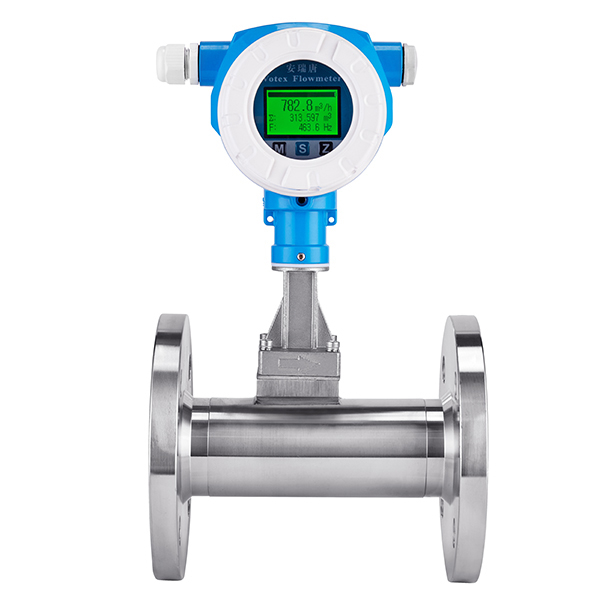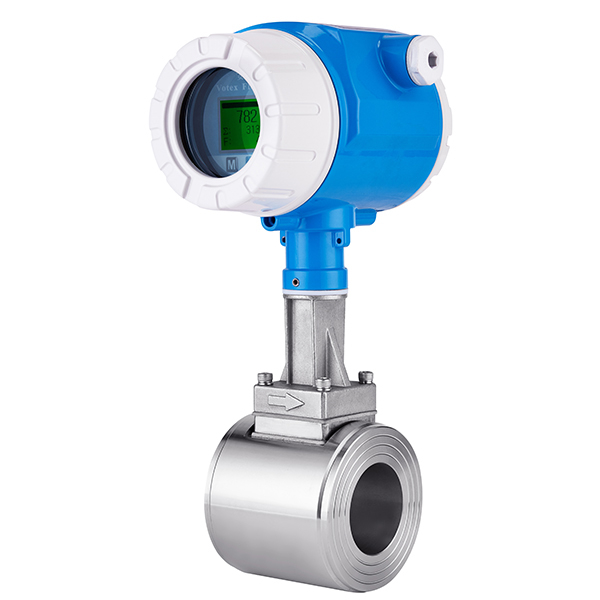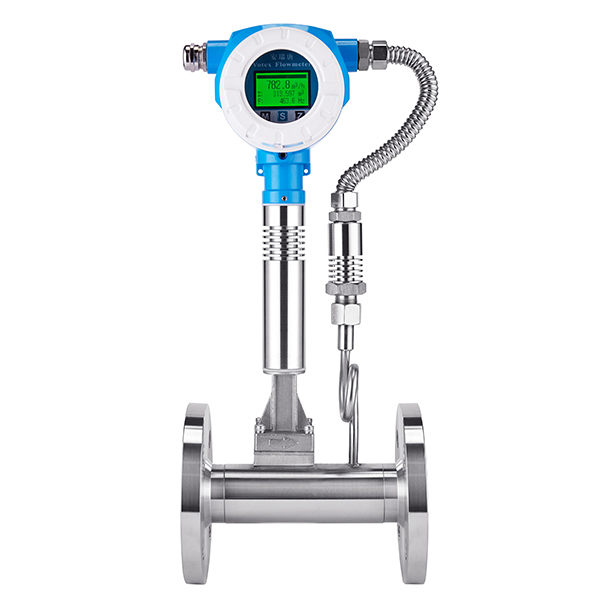-
Date:2025-09-09
-
Page View:176
A steam flow meter is an instrument used for flow measurement based on the Kármán vortex street principle. When fluid passes through a vortex generator (such as a triangular prism-shaped vortex shedder) inside the pipeline, it alternately generates regular vortices on both sides. The release frequency of these vortices is proportional to the average velocity of the fluid. By measuring the frequency of vortex release, the flow velocity and flow rate of the fluid can be calculated.
Steam Flow Meter Selection Guide
Consider the measurement medium: Select a flow meter suitable for the properties of the medium being measured (such as liquid, gas, or steam) and its characteristics (e.g., temperature, pressure, corrosiveness, viscosity, etc.).
Determine the flow range: Choose an appropriate flow meter model and specification based on the expected flow range, ensuring that the actual flow falls within the middle section of the meter's range for improved measurement accuracy.
Match the pipeline size: Select a flow meter with a diameter corresponding to the pipeline's inner diameter, while also considering pressure loss to ensure system performance is not affected.
Focus on Measurement Accuracy: Select an appropriate accuracy class based on measurement requirements. For high-precision applications, choose products with an accuracy of around ±1%, while general monitoring scenarios may use flow meters with an accuracy of approximately ±1.5%.
Consider Environmental Conditions: Choose a flow meter suitable for the working environment conditions (e.g., temperature, humidity, vibration, etc.) to ensure stable operation even in harsh conditions.
Factor in Maintenance: Opt for a flow meter that is easy to maintain and service, helping to reduce long-term maintenance costs and ensure reliable performance over time.

Steam Flow Meters

vortex steam flow meter

vortex gas flow meter
Advantages of Steam Flow Meters
High Measurement Accuracy: Steam flow meters offer high precision with minimal error, meeting the demands of accurate measurement. Their typical accuracy ranges between ±1% to ±1.5%.
Simple and Robust Structure: Vortex flow meters feature a relatively simple design with no moving parts, ensuring high reliability and long-term operational stability.
Low Pressure Loss: The design of vortex flow meters minimizes pressure loss during measurement, helping to reduce system operating costs and contributing to energy efficiency.
Wide Applicability: Steam flow meters can measure the flow of various media, including gases, liquids, and steam, making them suitable for a broad range of applications.
Multiple Signal Output Options: Vortex flow meters provide both analog standard signals and digital pulse signals, enabling easy integration with digital systems such as computers for automated control and remote monitoring.
Smart Features: Equipped with temperature and pressure compensation capabilities and digital circuit design, vortex flow meters deliver enhanced precision and reliability in flow measurement.
Applications of Steam Flow Meters
Industrial Production: In industries such as metallurgy, power generation, coal, chemicals, and petroleum, vortex flow meters are used to measure and control the flow of various fluids (including gases, liquids, and steam) to meet the demands of production processes.
Energy Measurement: Vortex flow meters can measure the flow of primary energy sources (such as coal, crude oil, coalbed methane, petroleum gas, and natural gas) and secondary energy sources (such as electricity, coke, manufactured gas, refined oil, liquefied petroleum gas, and steam). This provides critical data for scientific energy management, enabling energy conservation, reduced consumption, and improved economic efficiency.
Environmental Protection: Vortex flow meters are employed to monitor and control the discharge flow of emissions such as exhaust gases, waste liquids, and sewage. This contributes to improving the quality of air and water resources.
Transportation: In pipeline transport, steam flow meters serve as key tools for control, distribution, and scheduling. By measuring the flow of fluids in pipelines, they enable precise control and management of the transportation process.
The model of a steam flow meter is determined by the flow rate capacity. Therefore, to select the appropriate model, it is essential to first understand the flow range—including the minimum and maximum values—within which the flow meter must operate. Since flow values differ for liquids, gases, and steam, the selection must be made accordingly.
For example, a 20DN flow meter may have a flow range of 0.8–10 for liquids, 5–40 for gases, and 8–80 for steam. The actual flow must fall within the corresponding range for proper operation. In addition to flow rate, other detailed parameters of the flow meter should also be thoroughly understood.
Selecting an incorrect model can lead to inaccurate measurements, making proper model selection crucial. Beyond flow rate, the sensor diameter is another key factor. Special attention should be paid to the lower and upper flow limits of the diameter. During selection, it is important to convert the actual temperature and pressure based on field conditions to ensure accurate performance and avoid measurement errors.










